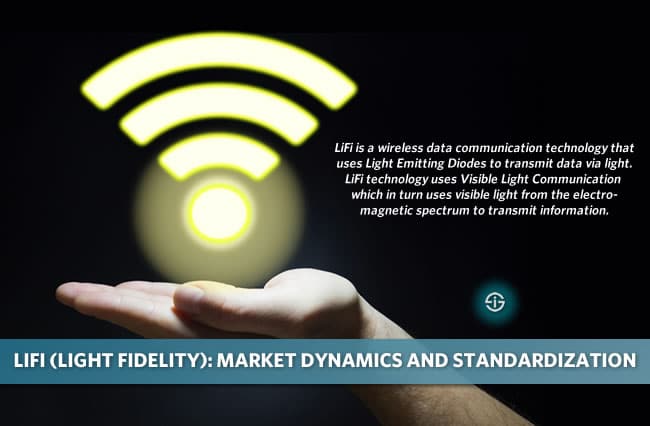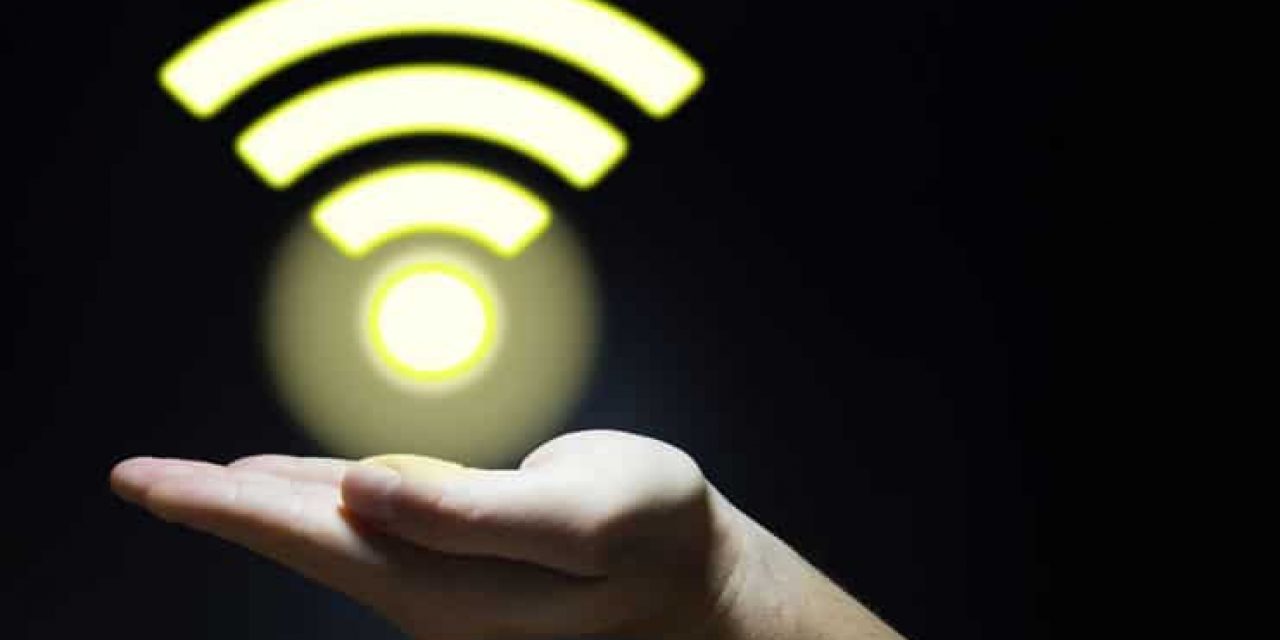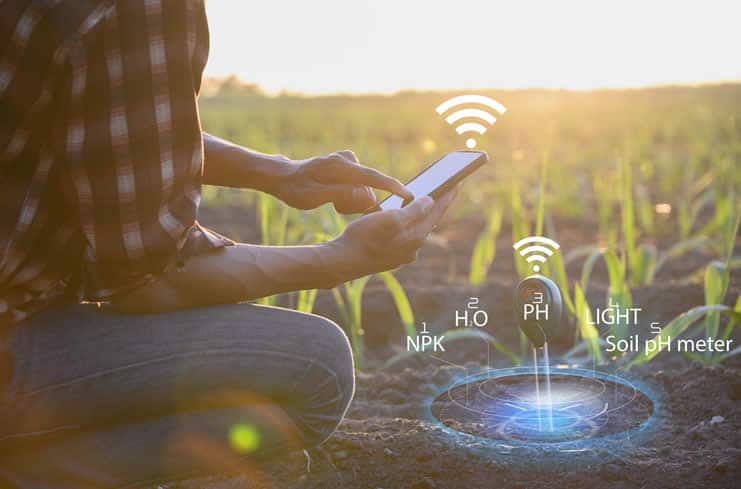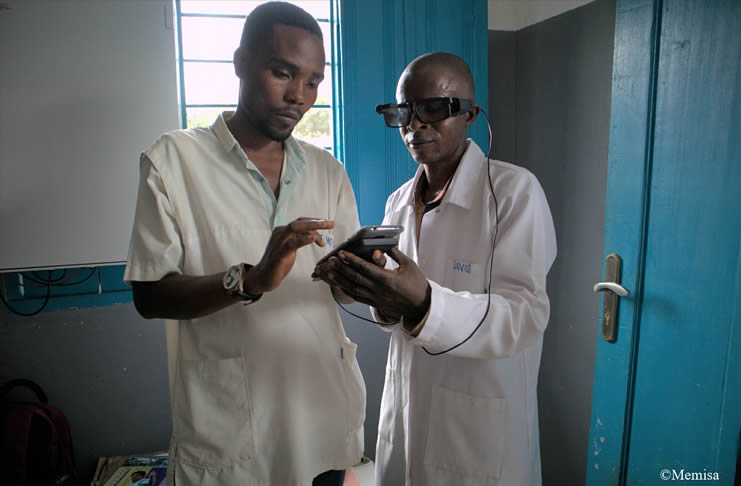It is still early days for LiFi and it will remain a matter of niche applications for quite some time. However, the attention for LiFi, the market and LiFi use cases all increase. Moreover, new chips with LiFi are ahead and several evolutions at the same time open opportunities for more applications. End 2017 the IEEE also announced it starts working on standards for visual light communications with the creation of a light communication study group (the IEEE 802.11 Working Group).
Although LiFi is not new and visual light communications encompasses more than LiFi it’s another token of the increasing attention for wireless LANs powered by visual light in the scope of LEDs.
At the same time there is also quite some movement in the market with vendors preparing to get a piece of the pie, among others by entering LiFi consortia or acquiring Light Fidelity players. Other large groups in particular markets are closely watching and increase support, albeit it often ‘behind the screens’ and not looking at LiFi as a replacement for Wi-Fi but as being very relevant for their future roadmaps in a de facto heterogeneous context.
Keeping in mind that as said it’s still early days (despite the fact that the term LiFi has been introduced in 2011 and applications existed before that) and that we will continue to emphasize the initial highly specific applications, expect even more attention for LiFi products at tradeshows in 2018 than was already the case in previous years when the Mobile World Congress always was a good place for Light Fidelity announcements.
Today, just as in the good old early days of Wi-Fi you still need a USB dongle to get your connectivity via LiFi. Moreover, products are still expensive but as per usual once costs come down adoption will expand. There are also new LED technologies ahead which would help improve LiFi and solve some of its well-known challenges. It is also just a matter of time, again just as was the case with Wi-Fi, before chips with embedded LiFi capabilities hit the market.

LiFi and the Light Fidelity market
The Li-Fi market is still niche and LiFi use cases are relatively limited but show important cases for the future. Yet, taking into account shortcomings and other evolutions in the wireless LAN area, it is only a matter of years because LiFi will not just come with ever more use cases for LiFi but also have a key impact on various applications in IoT. It’s clear that LiFi standardization efforts are crucial here.
Simply put, LiFi leverages the possibility to create communication streams from LEDs which can be switched off and on very fast without damaging the LED (as would be the case with other lights). LiFi (also Li-Fi, short for Light Fidelity) is a wireless data communication technology using LEDs (Light Emitting Diodes) to transmit data via light. LiFi technology uses Visible Light Communication or VLC which in turn uses visible light from the electromagnetic spectrum to transmit information wirelessly in more secure, faster and energy-friendly ways than Wi-Fi, as we know it today, does.
LiFi needs to be seen as being additional to Wi-Fi (again a matter of those LiFi use cases) although it will also replace it here and there and, perhaps more importantly, could be a fit in other IoT-related communication evolutions (although LiFi is about much more than IoT and IoT wireless connectivity but is a new paradigm of mobile and mobility), for instance in the scope of Power over Ethernet (with its new standard coming in 2018).
One of the leading companies in the LiFi Ecosystem is French Lucibel. Other companies include pureLiFi (co-founded by Harald Haas who showed LiFi in action for the first time in 2011 and coined the term), VLNComm and OLEDCOMM (founded by inventor Suat Topsu).
These and other companies already operate in ecosystems of large companies who also want a footprint in the LiFi market, among others through acquisitions (early 2017 Philips acquired French Luciom).
LiFi standardization and the IEEE 802.11 Light Communications Study Group
The announcement of the formation of the IEEE 802.11 Light Communications Study Group is an important step that was awaited since some time. Yet, of course it is just a first important step on the long road to standardization which is one of politics and resistance from groups who don’t want to see LiFi nor VLC too.
As the press release of the new IEEE Study Group puts it Light communications represent a readily available and very large source of wireless spectrum outside of the traditional radio spectrum, and utilizes solid state lighting, e.g., LED lighting, installations to transmit high bandwidth data as a wireless network.
On top of increased bandwidth, efficiency and security also data density is mentioned as part of the potential of the technology.

Nikola Serafimovski, who works at Harald Haas’ pureLiFi as VP Standardization and Business Development in Edinburgh (where there is also a LiFi research center, chaired by Haas) is chair of the IEEE 802.11 Light Communications Study Group.
He states that “It’s an exciting time for the light communications market sector, as it is poised for substantial growth over the next five years. We look forward to broad participation under the auspices of the IEEE 802.11 Wireless LAN Working Group and the IEEE-SA as we work to develop the light communications market in line with industry needs, and to ensure best practices that drive market expansion.”
You can read more about Light Fidelity in the section with latest Li-Fi research news on the Edinburgh University page here, including a more comprehensive LiFi definition: “LiFi is cellular wireless networking (re)using lights. Specifically, light emitting diodes (LEDs) are used in LiFi as visible light transmitters. This means future lighting systems fulfil two functions: high speed wireless networking and illumination. LiFi supports multiuser access and handover to enable mobile services. Since LED lights emit incoherent light only intensity modulation and direct detection can be used”.
You can follow the work of the IEEE 802.11 Working Group here.
Initial and upcoming LiFi applications
According to Li-Fi market research the global Li-Fi market is growing fast in its particular niche domains which do keep expanding though.
A look at the main industries and LiFi use cases, as found by several reports, shows a picture that is relatively similar to the industries and initial use cases as reported in the press release of the IEEE study group launch. These include environments challenged by electromagnetic interference (EMI) such as hospitals (think among others operating theaters), petrochemical plants and airplanes (e.g. applications in aircraft cabins). They also include secure environments where RF (radio frequency, used in Wi-Fi) is not sanctioned.
You can read more about these and more LiFi use cases, the LiFi market and how companies are already applying and testing LiFi without waiting for that LiFi standardization.
Top image: Shutterstock – Copyright: BeeBright – All other images are the property of their respective mentioned owners.






